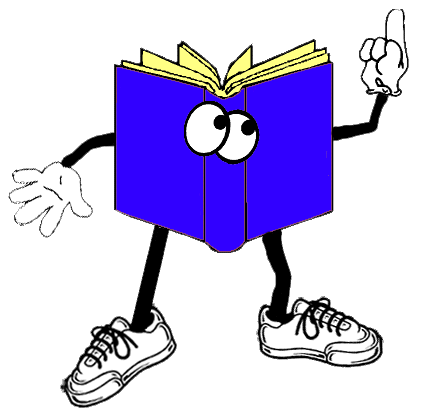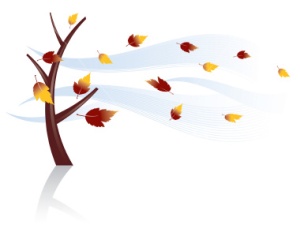This next half term with our Stage 3 or 4 language learners I wanted to find a poem that was sophisticated in message and familiar in context but that had sufficient challenge to move our more advanced language learners forwards.These young learners have a good understanding of present tense sentences made up of nouns, simple common verbs and adjectives.Most of the children can add adjectival agreement relatively accurately and will be revisiting and practising prepositions in the context of house and home this half term
I found the appropriate challenge and context in this poem by Luce Guilbaud and what a fantastic poem too!
La nuit
La nuit est entrée dans ma chambre
sur ses pieds de velours
elle s’est cachée derrière les
rideaux
elle a cueilli des roses dans le vase
installée au fond du grand fauteuil
elle a lu tous les livres
elle s’est roulée sur le tapis
elle était si bien endormie
Quand la lumière a jailli
la nuit surprise a fui
elle a escaladé la fenêtre
et disparu dans le jardin
derrière les sapins
Luce Guilbaud .Poèmes tout frais
La farandole. Scanédition
Why do I like this poem and why do I think that our learners care up to the challenge?
Well in ,my opinion because you can break this poem down in to component parts and because it evokes the feeling of night passing through a room like a cloak that moves from one side of the room to the other.Night comes in through the door and climbs put of the window and disappears in to the garden .The poem could act as a stimulus material to some wonderful poems in english where the children personify weather or times of the day etc.Plus on a more simple note there is the content of house ,home and prepositions in this poem and the ideas are sophisticated enough for 10,11 1,2 year olds!
Do I realise that the poem is written in the perfect tense - a past tense?
Yes but I want to challenge the children to look beyond the grammar and understand the pictures and images that are created.It's an opportunity to introduce and expose the children to the written form of the perfect tense but not to focus on how the tense has been formed.
The activities below would form two lessons of language learning
Activities: the night's cloak
- Discuss with the class in english the difference between light in the daytime and the darkness of night
- Can they think of adjectives in english to describe the night? Give them thinking and pair talking time and take feedback
- Share with the class the idea that the night is like a cloak that passes over the world and moves from one area to another and as it leaves the daylight arrives.Explain that this is just like being covered by a cloak
- Ask the children to look up adjectives in a French/English bi-lingual dictionary that they think are powerful adjectives to describe the night
- Take feedback and collect the adjectives on the whiteboard and ask the children to share the french and the english meaning so that all the class can understand the adjectives.Take a class vote on the top five adjectives by using a class tally chart and a show of hands.
- Show the class the french word for night "la nuit" .Ask the children to tell you something important about this noun( we want the children to identify that this is a feminine singular noun because they can see "la" in front of the noun)
- Share with the class your cloak to represent the night ( A4 card folded to resemble a cloak). In the centre you can see "la nuit est ...." and around the cloak are written some adjectives spelt to agree with the feminine noun "la nuit"
- Ask the children to help you complete the gaps next to the stars on the cloak with other favourite adjectives to describe the night- making sure they are spelt accurately to agree with the noun
- Now let the children create their own cloaks of the night:
.JPG)
I think this would work best with black A4 card and chalks for a class french display.
Activities: movements and actions in the poem
- Before you read the poem with the children you will need to unpack the poem so that all the children can successfully access and enjoy the poem.Explain to the class that they are first of all going to look at the ingredients and ideas that a french poet has put together to create a very evocative description of the night passing through a room in a house.
- Ask the children to think of verbs that might describe the way the night might move in its mysterious dark cloak through the room .Listen to their ideas
- Share with the children the movement cards that track the night as she moves through the room in the poem.Can they think of verbs in english that would explain the movements. I have selected the following key past participles from the poem and drawn simple symbols to explain the movement.The blue arrows indicate the type of movement (entrée/cachée/installée/roulée/escaladé/disparu):
.JPG)
.JPG)
.JPG)
4.Now give the children the key past participles as separate cards.You will see that I have highlighted in blue key clues in the words that will help the children associate the french past participle with a specific action.Can they match the words to the symbol cards above.
5.Ask the children to share their decisions with a second group to see if they have matched the same symbols with the key word cards, for example ......
6.Have the children been able to work out the meaning of all the movements? discuss woth teh children which ones were easy and which ones were more challenging and did they think that for example escaladé meant escaped? Ask the children to check the meanings in bilingual dictionary by looking up the infinitive - you may need to write the infinitives on the whiteboard for the children.
7. Explain to the children that these actions have all taken place and the poet has recorded what has happened - so how would you say these actions in english if you wanted to explain the same idea?
8.Now ask the children to find a space in the room - this would work best in the hall - and to become the night as she moves through the classroom. Can they stand in their space and mime carefully the night's actions as you call out the past participles from the poem.
Activities : investigating the poem
- Give the children picture cards of the key objects in the poem.Explain to the children that they are entering a room in a house.Can they put the picture cards in order as they find them from the beginning to the end of the poem.Do any of the pictures belong outside of the room? (chambre/les rideaux/le vase/fauteuil/ les livres/le tapis/la fenêtre/le jardin/les sapins)
- Now read through the poem with the children- explain first that there will be parts of the poem that they do not yet understand fully but that they are now on a mystery tour with the night through the room.
- As you come across the following phrases see if the children can help you to understand what the meaning of each statement is to build up an even better picture of the night and how it behaves.Remind the children that the night is acting like a person so they need to look for the nouns they can understand.Perhaps they will need to use the bilingual dictionary to find out the meaning of words they think could be important but don't understand plus look for familiar clues in the unfamiliar words.
sur ses pieds de velours
cueilli des roses dans le vase
lu tous les livres
bien endormie
Activities: the key to the poem
- Can the children help you to see what happens to the night when the daylight arrives? Give them the key to the poem: la lumière
- Can they locate the word in the poem and see the change in the behaviour of the night after this word is mentioned?
Activities: la nuit - making the poem your own
- You could use the hall space and read the poem for the children and let them act out the movement and behaviour of the night as it travels through the space of the hall.
- You could create chalk drawings of the night as it passes across the paper as if it's passing through a room and then on white paper show how the night behaves once daylight arrives, using pencil sketches this time


.JPG)
.JPG)
.JPG)
.JPG)
.JPG)
.JPG)






.JPG)
.JPG)

.JPG)
.JPG)
.JPG)

